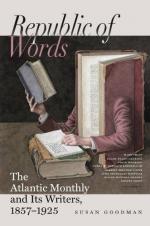The first innovation in the habits of the young Indian was brought about by the magical power of two side-combs ornamented with colored glass. At the first sight of them, A-lee-lah manifested admiration almost equal to that which the scarlet peas had excited in her childish mind. Aunt Mary, perceiving this, parted the curtain of raven hair, and fastened it on each side with the gaudy combs. Then she led her to the glass, put her finger on the uncovered brow, and said,—
“A-lee-lah has a pretty forehead. Aunt Mary likes to see it so.”
William translated this to his simple wife, who said,—
“Aunt Mary good. Me tank.”
Mr. Wharton happened to come in, and he kissed the brown forehead, saying—
“Father likes to have A-lee-lah wear her hair so.”
The conquest was complete. Henceforth, the large, lambent eyes shone in their moonlight beauty without any overhanging cloud.
Thus adroitly, day by day, they were guided into increasing conformity with civilized habits. After a while, it was proposed that they should be married according to the Christian form, as they had previously been by Indian ceremonies. No attempt was made to offer higher inducements than the exhibition of wedding-finery, and the assurance that all William’s relatives would be made very happy, if they would conform to the custom of his people. The bride’s dress was a becoming hybrid between English and Indian costumes. Loose trousers of emerald-green merino were fastened with scarlet cord and tassels above gaiters of yellow beaver-skin thickly embroidered with beads of many colors. An upper garment of scarlet merino was ornamented with gilded buttons, on each of which was a shining star. The short, full skirt of this garment fell a little below the knee, and the border was embroidered with gold-colored braid. At the waist, it was fastened with a green morocco belt and gilded buckle. The front-hair, now accustomed to be parted, had grown long enough to be becomingly arranged with the jewelled side-combs, which she prized so highly. The long, glossy, black tresses behind were gathered into massive braids, intertwined on one side with narrow scarlet ribbon, and on the other with festoons of the identical Guinea-peas which had so delighted her when she was Wik-a-nee. The braids were fastened by a comb with gilded points, which made her look like a crowned Indian queen. Emma was decidedly struck by her picturesque appearance. She said privately to Cousin Bessie,—
“I should like such a dress myself, if other folks wore it; but don’t you tell that I said so.”
Charles smiled, as he remarked to his wife,—
“The grub has come out of her blanket a brilliant butterfly. Uncle George and Aunt Mary are working miracles.”
After the wedding-ceremony had been performed, Mr. Wharton kissed the bride, and said to the bridegroom,—
“She is handsome as a wild tulip.”




